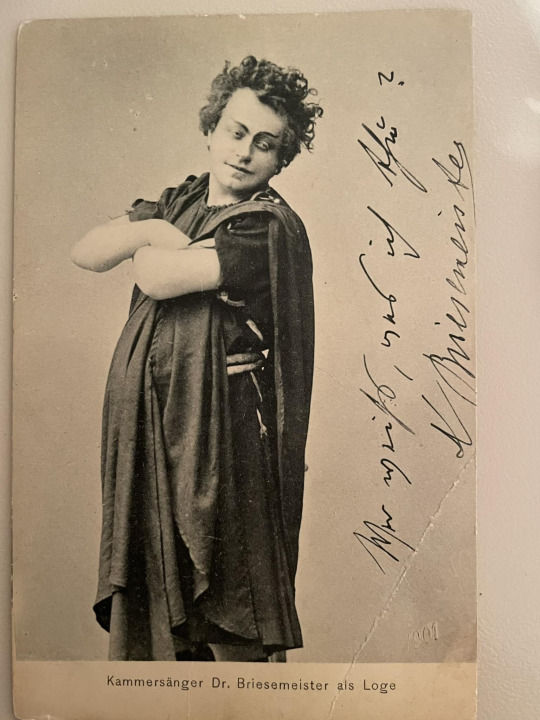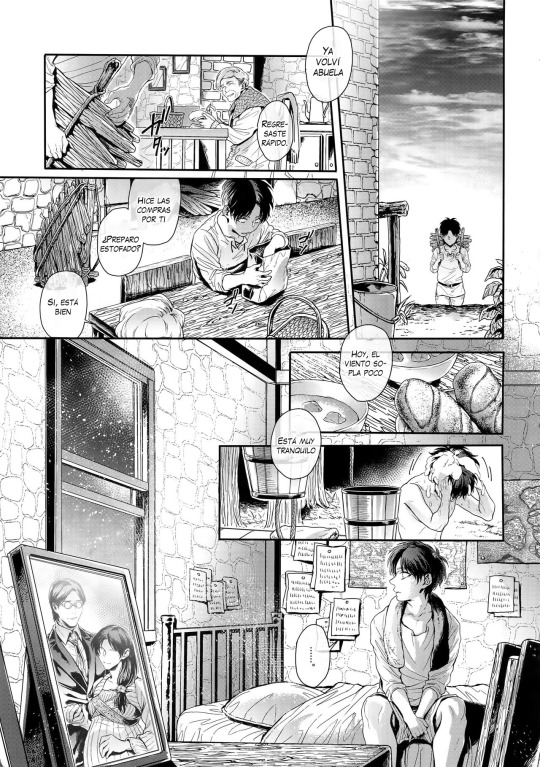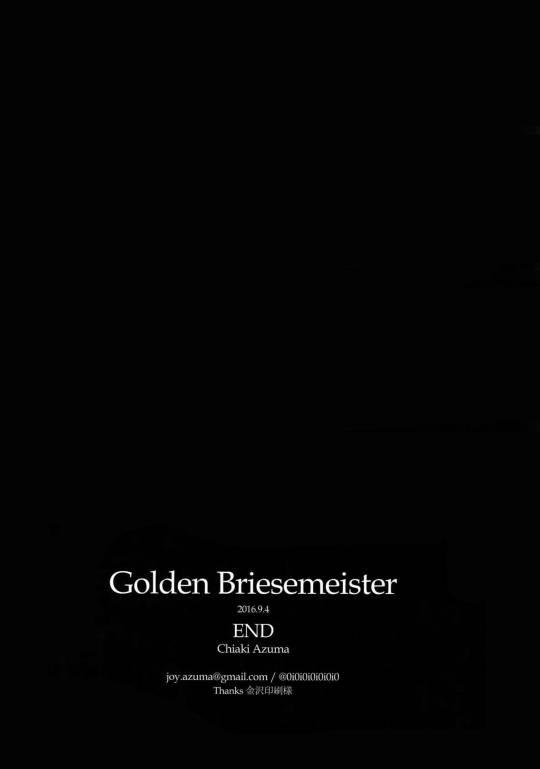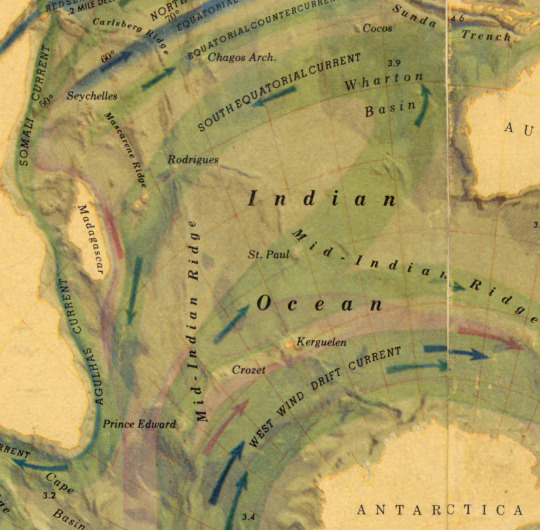#Briesemeister
Text

Today we see the German Tenor and Doctor Otto Briesemeister (1866-1910). He was from 1899-1909 the Loge in Wagner's Ring at the Bayreuther Festspiele and was Doctor in Berlin. You ever have heard from him?
Postcard with Autograph from 1904.
#opera#classical music#music history#bel canto#composer#classical composer#aria#classical studies#Otto Briesemeister#Briesemeister#tenor#Bayreuther Festspielen#medical doctor#doctor#classical musician#classicical musicians#classical history#classical singing#classical singer#history of music#classical#classical voice#historian of music#musician#musicians#diva#prima donna#maestro#chest voice#Postcard
4 notes
·
View notes
Photo

Curious Fawn by Chad Briesemeister
71 notes
·
View notes
Text
Golden Briesemeister [Riren]


Créditos a quien corresponda -w-
Artist: END (Azuma Chisato)
Pairing: Levi Ackerman x Eren Jaeger
Traducción Chino: 路过的骑士汉化组
Traducción Español: F. Flower
Link sin censura
No olviden apoyar a la artista y la traducción original nwn <3













































56 notes
·
View notes
Photo





#TopoTuesday
Today we’re headed under the sea for our topography. This map, The Newly Discovered World Beneath the Waves, comes from 1959 and was drawn by Richard Edes Harrison for Fortune Magazine’s November issue. The caption talks about the way the deep waters are more affected by the underwater geologic features than by the wind:
“Veteran oceanographers are astounded by the variety and grandeur of the geologic features on the ocean bottom.”
There is also a handwritten note on the map from Harrison to William “Bill” Briesemeister, who was one of his influences as a geographer.
700 A-1959
#maps#ocean#world maps#topography#currents#geology#Richard Edes Harrison#Fortune Magazine#Time Magazine#underwater#oceanography#sea floor#WilliamBriesemeister
89 notes
·
View notes
Photo

© All rights reserved by Chad Briesemeister
846 notes
·
View notes
Photo

Peeking Fawn by Chad Briesemeister on 500px
498 notes
·
View notes
Photo

Today would have been FW Adam Briesemeister's 32nd birthday. A one-time member of the Twin Cities General Membership Branch of the IWW, he was also heavily involved in a variety of community and activist projects in Minneapolis. He worked as a substitute teacher for Minneapolis Public Schools. Adam passed away in 2012 when attempting to rescue his roommates during a house fire. Gone but not forgotten.
#communism#revolution#acab#anarchist#anarcho#punkrock#anarchism#anarchocommunism#anarchocommunist#antifascist#LibCom#punk#antigovernment#anarchy
2 notes
·
View notes
Text
Five years after “wir schaffen das”, Germany’s migrants are integrating
Did they handle it?
Five years after “wir schaffen das”, Germany’s migrants are integrating
But those whose claims are rejected are stuck in legal limbo
Aug 25th 2020
BERLIN AND GÖTTINGEN
ASKED WHAT he makes of his new home, Safwan Daher, a Syrian refugee, chuckles: Duderstadt, a town near Göttingen that few Germans could find on a map, is “boring”. No matter. Mr Daher has an enjoyable computer-programming job that pays for a flat with three bedrooms. He keeps one empty, hoping his parents will leave Syria and join him. In his spare time he hangs out with his brother, a student at Göttingen University. The next step is German citizenship, for which he has just applied.
Karam Kabbani, an activist who fled Aleppo after Bashar al-Assad’s thugs tortured him, has had a rougher time. Nervously chain-smoking, he describes an anguished five years bouncing from one agency to another, forced to take dead-end jobs, with no help offered for his psychological scars. He plans to leave Germany when he can. “Germans are very closed people,” he says. “No one wants to help.”
On August 31st 2015, with a growing number of asylum-seekers reaching Germany, Angela Merkel declared: “Wir schaffen das” (roughly, “We can handle this”). A few days later the chancellor opened the borders to migrants stranded in Budapest, amplifying the wave: perhaps 1.2m reached Germany before Balkan border closures and a deal with Turkey in 2016 stemmed the flow. Initially Germany handled the migrants well. Yet five years on, its experience of integrating them has been mixed.
Start with jobs. In 2015 an influx of mainly young migrants looked a neat fit for German firms facing an ageing labour force. Daimler’s boss foresaw an “economic miracle”. Rules were eased for asylum-seekers looking for jobs, and the government pushed 1.1m through integration and language courses. By 2018 43% of the working-age asylum-seekers who arrived between 2013 and 2016 were in work or training (compared with over 75% for the same age group in Germany as a whole)—better than the wave of refugees from Yugoslavia in the 1990s. (A stronger labour market helped.) Jobs came slowly at first, but accelerated as people emerged from integration courses, which hints at better to come. “These numbers are not perfect, but they are hopeful,” says Marlene Thiele, who runs a project at the German Chamber of Commerce to help firms hire refugees.
The headline figure conceals some awkward details. Barely half the refugees in Germany’s labour force today work in skilled jobs, although over 80% did in their home countries, calculates Herbert Brücker at the Institute for Employment Research, the research arm of the Federal Employment Agency. Many wash dishes in restaurants or make beds in hotels, with few prospects for advancement (and a high chance of covid-related layoffs). Women in particular have struggled, especially those from cultures that think their place is in the home. Many newcomers, especially from countries like Eritrea and Iraq, were functionally illiterate when they arrived and are still years away from entering the job market. Control for age, and average migrant earnings are around two-thirds the native German level.
Migrants were dispersed all over Germany; most live outside cities. That was a test for Germany’s decentralised government, which gives lots of power to local officials. (“In Berlin integration is just an abstract question,” grumbles Rolf-Georg Köhler, Göttingen’s mayor.) A study of 92 municipalities funded by the Robert Bosch Foundation found that many were quite adaptable, for example launching their own language courses while waiting for the bureaucratic wheels to turn in Berlin. Civil society was crucial. Mr Köhler credits the local sport association with speeding integration: the language of football is universal. Over half of Germany’s population has worked in some way with refugees. “We can activate a whole network if we need to,” says Bettina Briesemeister, who runs a refugee housing centre in Göttingen.
The flip side is confusion and inefficiency. Officials are sometimes unclear which layer of government is responsible for a policy, and states and municipalities swap ideas surprisingly rarely. More than 600 under-resourced “foreigners’ offices” are responsible for matters like work permits and deportations. The bureaucratic maze is disconcerting. “Ask any refugee what they fear most, and it’s the letterbox,” says Mr Kabbani: it invariably contains demands, appointments or warnings from official bodies they have never heard of.
Like many European countries Germany has struggled to deport failed asylum-seekers. More than 200,000 people have been granted Duldung (“tolerated”) status, meaning they have no right to be in the country but do not face immediate deportation. Perhaps a further 50,000 have no legal status. To stop them from slipping into idleness or worse, under new rules some may work or take on apprenticeships. But insecurity persists. One such rejected asylum-seeker, Mohammad Walizada, an Afghan who had worked with an American de-mining firm in Kabul, now has a legal job in a phone shop on Sylt, a North Sea island. But he has given up on his goal of getting a doctorate in Germany. “I have no hopes, it’s just survival,” he says.
“There is a huge difference in integration outcomes between people that receive protection and those that are in Duldung or rejected,” says Victoria Rietig of the German Council on Foreign Relations. Just 3% of those with Duldung status can move freely throughout Germany, which is no help when looking for a job. And because Germany has no birthright citizenship rule, their children are usually given the same status, and risk being deported to a country they have never known. “It’s this population we should be worried about,” says Ms Rietig. Germany seems afraid both of enforcing its rules and of making it too easy for failed asylum-seekers to find alternative ways into German society. As the numbers grow, the dilemma worsens.
Yet the country remains paralysed by the political battles of five years ago. The migrant crisis jolted the radical-right Alternative for Germany into third place at the 2017 election. A poll last year found a majority of Germans thought the country should accept no more refugees. These days the borders are quieter and the issue has gone off the boil, but fresh waves of migrants from Europe’s troubled neighbourhood can hardly be ruled out. “Mama” Merkel, as she is known to many refugees, long ago abandoned her “Wir schaffen das” mantra for a more paradoxical claim: that her decision to leave the borders open was correct, and must never be repeated.
Ahmad Denno, a well-integrated Syrian who is completing a degree in Berlin, identifies three types of German: those who treat him normally; racists who want him to leave; and those for whom he is permanently on probation. Asked if he could ever feel at home here, he shrugs. “For some, I could never be German. For others, I already am. I don’t feel like an outsider here. I’m just looking for a normal, safe life.” ■
This article appeared in the Europe section of the print edition under the headline "Did they handle it?"
https://ift.tt/2D4vAKH
0 notes
Link
Download PDF of Managing Complex Construction Projects A Systems Approach by John K. Briesemeister | PDF Free Download.
0 notes
Photo

(via Pinterest)
Photo on 500px by Chad Briesemeister.
2 notes
·
View notes
Photo

#Werbung #ChronischGesund #OnlineKongress vom 11. bis 21. April 2019 Erkenne – Liebe – Heile Hosts: Louisa Briesemeister, Andrea Hammer http://jeworno.net/chronischgesund (Link in Bio) 🎦 Durch diesen Kongress lernst du: 🐹 wie du deine #selbstheilungskräfte aktivierst 🐹 die Sprache deines Körpers verstehst 🐹 wodurch #Krankheit wirklich entsteht 🐹 was du konkret tun kannst, um deine #Energie anzuheben 🐹 wie du #chronisch gesund wirst und bleibst 📇 Speaker: #KurtTepperwein , Mike Hellwig, Anja Reiche, Bernadette Schwienbacher, Ewelina Kronbichler, Sebastian Mauritz, Arne Tempel, Clemens Kuby, Alexandra Stross, Raik Garve, Britta C. Lambert, Alexander Toskar, Thea Wachtendorf, Andre Blank, Susanne Hühn, Christoph A.M. Henninger, Sina Dirks, Regina Hauser, Katharina Nestelberger, Irmgard Bronder, Georg Meier, Christian Rieken, Lilian Runge-Rieken, Hartmut Lohmann, Silvia Maria Engl, Equiano Intensio, Mischa Miltenberger, Volker Mann, #BrunoWürtenberger, Udo Grube, Uwe Albrecht, Yves Becker, Renata Vogelsang, Volker Meißner, Axel Burkart, Ramon Gartmann, Robert Weber, Sabine Huber, Louisa Briesemeister, Andrea Hammer 🌷🌹🌻🌾🌿🌷🌹🌻🌾🌿🌷🌹🌻🌾🌿🌷🌹🌻🌾🌿 #Selbstheilung #chronischkrank #gesundheit 🐿 (hier: Link in Bio) https://www.instagram.com/p/BwDHB_LnjEV/?utm_source=ig_tumblr_share&igshid=1ilc5tgsvq1vo
#werbung#chronischgesund#onlinekongress#selbstheilungskräfte#krankheit#energie#chronisch#kurttepperwein#brunowürtenberger#selbstheilung#chronischkrank#gesundheit
0 notes
Text
The Department of Orthopaedic <b>Surgery</b> Welcomes Three New Members to the 6100 Team Corner
Please join the Department of Orthopaedic Surgery in welcoming Dalis McCall, Kyle Briesemeister and Mia Young to the 6100 Team Corner.
from Google Alert - surgery https://ift.tt/2V3jNA7
0 notes
Text
The Department of <b>Orthopaedic</b> Surgery Welcomes Three New Members to the 6100 Team Corner
Please join the Department of Orthopaedic Surgery in welcoming Dalis McCall, Kyle Briesemeister and Mia Young to the 6100 Team Corner.
from Google Alert - Orthopaedics https://ift.tt/2TIly3S
0 notes
Photo

Photo Of The Day By Chad Briesemeister Tod... New publication in StubFeed.com/photography from outdoorphotographer.com Come to see more... stubfeed.com • #stubfeed #stubfeedphotography #photography * stubfeed.com/outdoorphotographer.com http://bit.ly/2VIiBCK
0 notes
